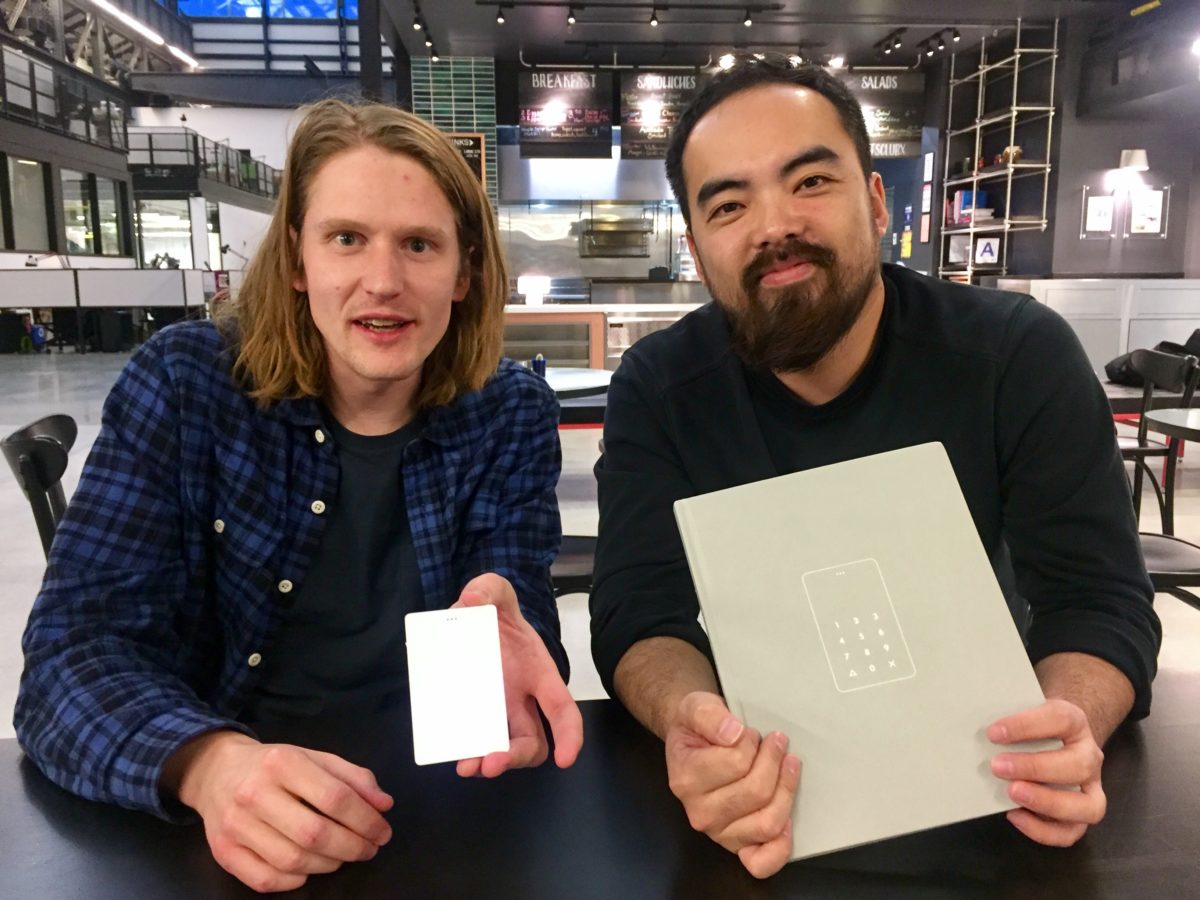Innovation, and technology generally, can be boiled down to one function: solving problems. But sometimes those solutions have their own problems.
One of the most arresting products we’ve come across here at Technical.ly is the Light Phone, an innovative phone for all the features it lacks, which is nearly all of them. Users can pair their Light Phone with their current smartphone so that calls forward. On the Light Phone users are unable to text, access the web, use Instagram or Twitter or any of the other apps whose notifications give a user’s brain that little dopamine kick that keeps them in the otherwise very one-sided and unhealthy relationship with their phone so many of us find ourselves in, while still being accessible in cases of emergency.
The phone, the first of which shipped last week, is the work of Joe Hollier and Kai Tang. The duo met at Google’s incubator for designers, 30 Weeks, in the spring of 2015.
“One thing that stuck out was that one of the biggest markers of success was retention,” Hollier explained, of 30 Weeks, in an interview in the company’s headquarters in New Lab. “Not your revenue, but how many hours a day your users were plugged into it. The idea being that if it was sticky enough you could develop a whole slew of business around it. We felt products were being built to get people addicted less than trying to solve some human need.”
So they decided to do the opposite.
By the end of the program the pair had a prototype of the Light Phone and launched a Kickstarter. The phone is designed beautifully. It looks like a thick credit card, all in white. The numbers and display are made of white light that exist not on a screen but seem to emanate out through the middle of the phone. The campaign doubled its audacious goal of $200,000, with 3,187 backers donating more than $415,000 in total. The backers came in from all across the globe, indicating this phone addiction was not just a New York phenomenon or even a uniquely American phenomenon. Europeans and Canadians and Australians, and pretty much anyone who was online and could read English was feeling it, too.
“If this was five years ago, I doubt it would create this much buzz or would resonate with people,” Tang said in an interview. “Back then people were still enjoying their smartphone, exploring their smartphone. Now I think we feel more like the device is controlling you. It can’t be right that families are staring at their phone at dinner, at concerts people are taking their phones out and sharing instead of just enjoying the concert.”
The Light Phone has arrived…💡https://t.co/jiJ5tb2TD5#thelightphone pic.twitter.com/T9O7EGlYdX
— Monica Cater (@MonicaBCater) February 7, 2017
But the duo ran into a snag when it came to actually manufacturing the phones. Used to working with companies like Motorola and Samsung, manufacturers had trouble wrapping their minds around a very limited release like this. In fact, Hollier explained, manufacturers would be losing money making the Light Phone for all the time it would take to set up new systems and assembly lines for the phone, rather than using that time to keep making more big-name phones.
That changed one day in Taiwan, in a meeting with Foxconn, the maker of iPhones and other Apple devices.
“We pitched the idea and their VP of business development said, ‘I want this now. Email is ruining my life,'” recalled Tang.
Not only did the manufacturing giant agree to make the phones, it became Light Phone’s first investor, chipping in $1.7 million. Tang and Hollier would go on to raise $3.6 million in total, almost all of it from West Coast and Asian investors.
When asked if the company was conflicted in its relationship with Foxconn, both founders said they were. Both also said the situation at Foxconn has both improved since 2011-12 and also is far more complicated than many in America, or in the American media understand. But nevertheless, they said the relationship has been both a point of pride and concern for them.
We don’t want to just make a one-off phone. We want to make product and art that's human.
Tang said that he’s found it difficult raising money from New York investors. Only $100,000 of the $3.6 million has come from New York.
“I think because unlike Asia or Silicon Valley, investors people here might not be that familiar with the manufacturing process or [with] a small company trying to make a device, which is more common in Asia or China,” he said.
Nonetheless the company has found Brooklyn, and New Lab specifically, to be a good mental environment for their work, which, as Hollier describes it, is not too techy.
“When we heard about a tech hub in Brooklyn we were kind of like … no, thanks,” he said. “Same thing with Silicon Valley. All tech startups. But we came here and fell in love, this place is, like, inspiring to be inside.”
The team has shipped more than 1,000 Light Phones to date and preordered 7,000 more. It expects that, come spring, it will sell to the general public. If all goes well, the Light Phone won’t be the culmination of their work, but the beginning of a new way of imagining technology.
“We don’t want to just make a one-off phone,” Tang said. “We want to make product and art that’s human.”
Join the conversation!
Find news, events, jobs and people who share your interests on Technical.ly's open community Slack
